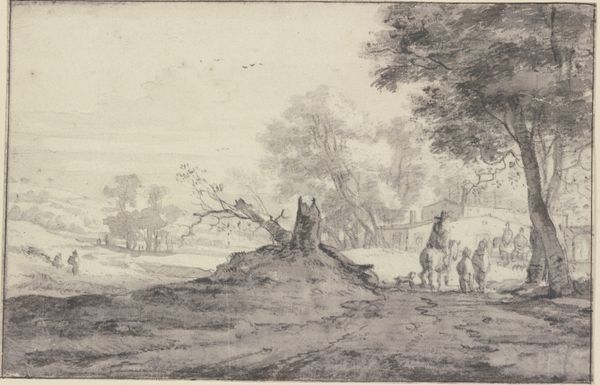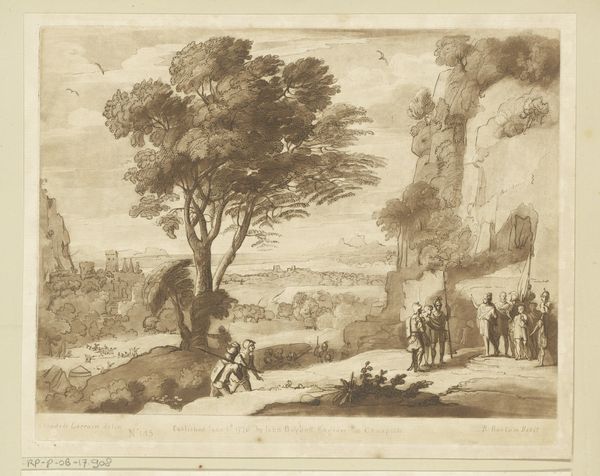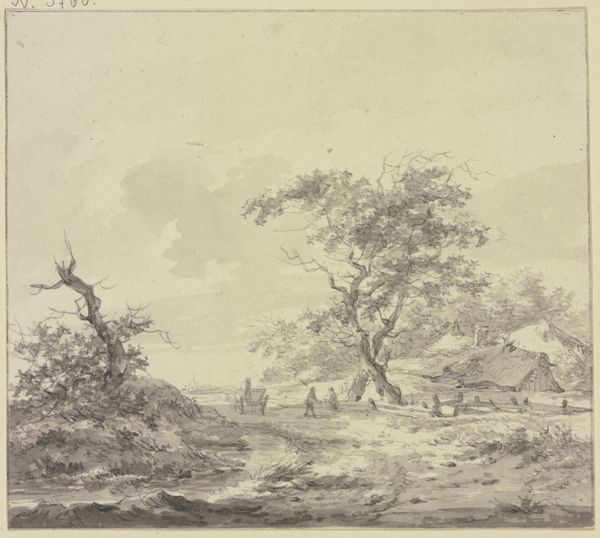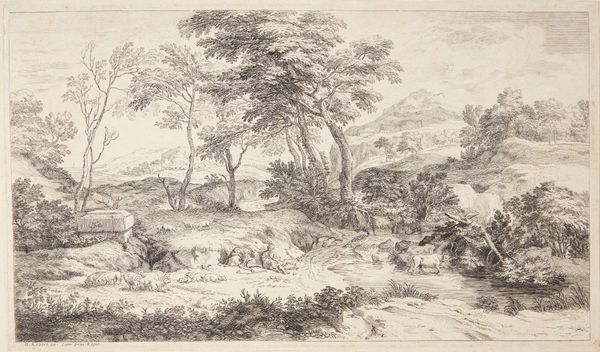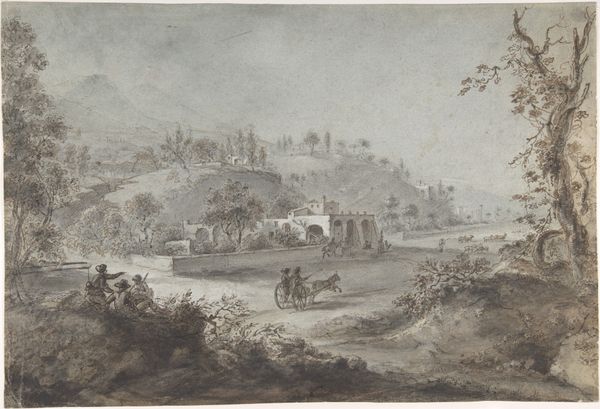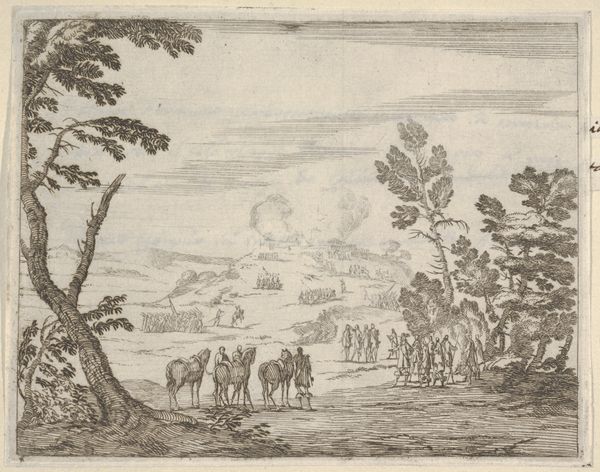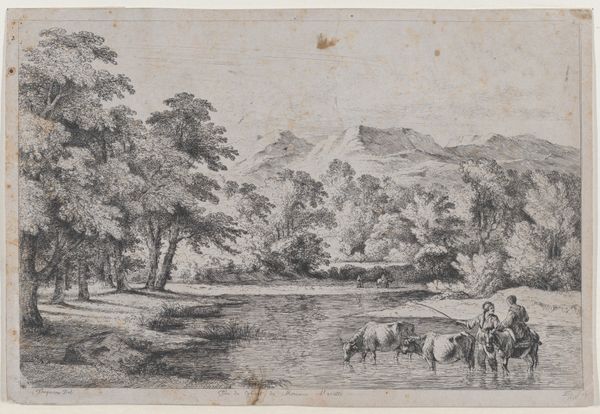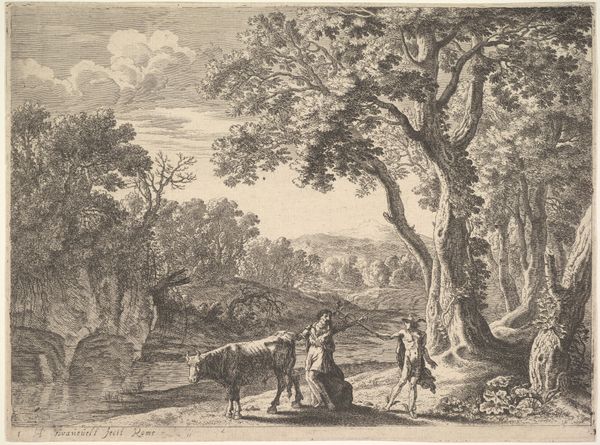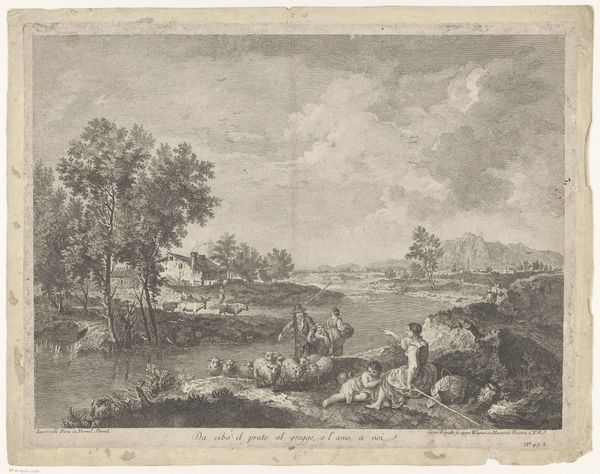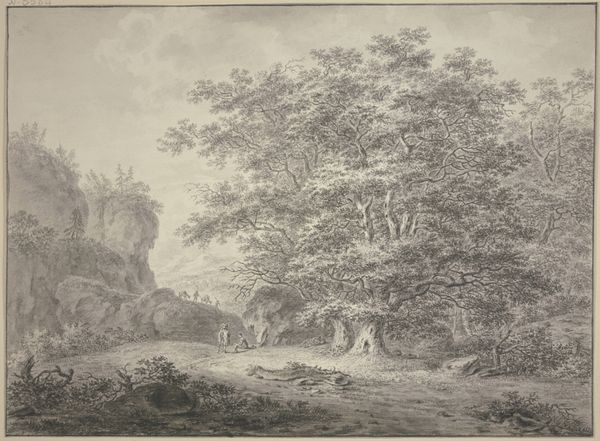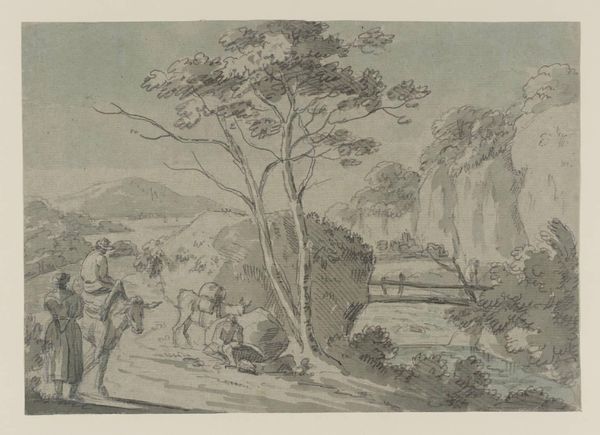
drawing, paper, ink, pencil
#
drawing
#
baroque
#
landscape
#
figuration
#
paper
#
ink
#
pencil
Copyright: Public Domain
Editor: We are looking at Jan Both’s "River landscape with figures," an ink, pencil, and paper drawing. I’m immediately struck by the soft, almost hazy quality. It's so detailed, but feels like a dreamscape. What's your interpretation of this piece? Curator: Considering the Baroque period, landscape art held a complex role. While seemingly pastoral, it wasn't just about pretty scenery. The rise of landscape coincided with shifting social structures and nascent colonialism. Do you notice how the figures are arranged? Editor: They're almost dwarfed by the landscape, kind of small and arranged from foreground to background. There is a person on a horse in the middle-ground who appears to be in charge and pointing at something. What does that imply? Curator: Precisely. The control the figures exert – pointing, traveling, surveying – reflects an emerging sense of human dominion over nature, fueled by exploration and economic ambitions. Think of the Dutch East India Company at this time. How do you think this kind of landscape art played a role in constructing national identity? Editor: I hadn't thought about it like that, but I see it now. These idealized landscapes, even in drawings, project an image of a prosperous and ordered world ripe for... expansion. Curator: Indeed. The “naturalness” is carefully constructed to normalize this worldview. It shows how even seemingly innocent artistic choices can reflect broader socio-political currents. Editor: That's fascinating. It shifts my whole understanding of landscape art. I was so focused on the artistic style. Curator: Art doesn't exist in a vacuum; it actively shapes and is shaped by the world around it. Thinking critically about its social context is key.
Comments
No comments
Be the first to comment and join the conversation on the ultimate creative platform.
